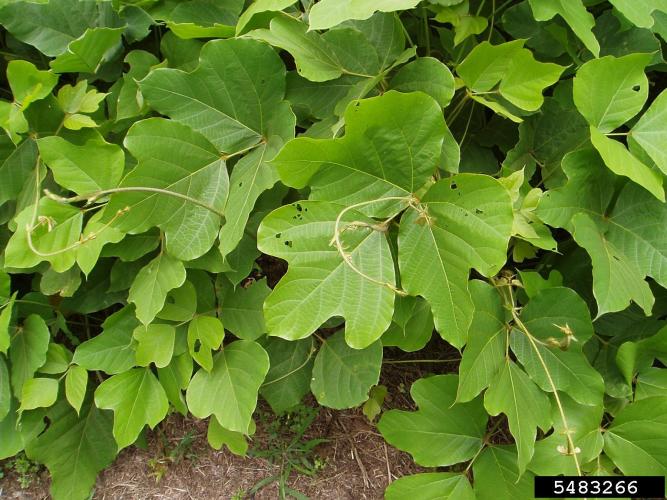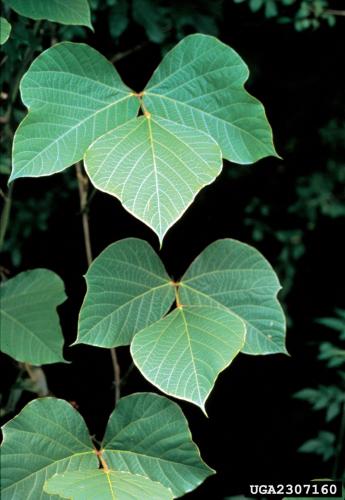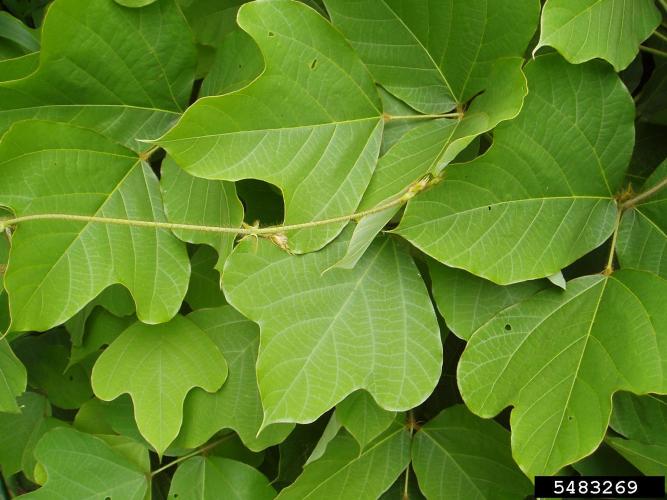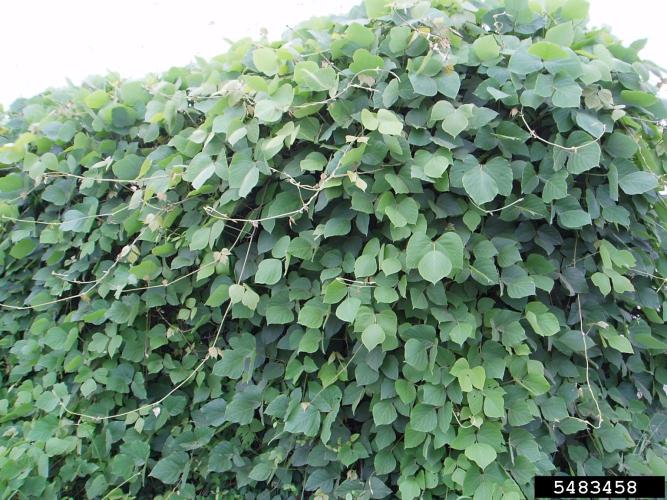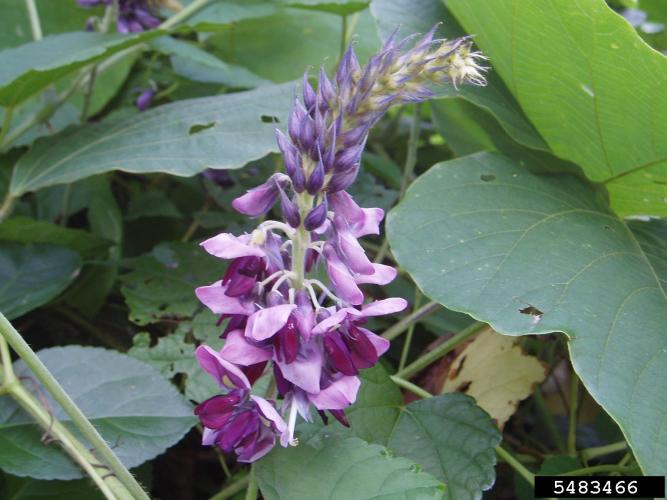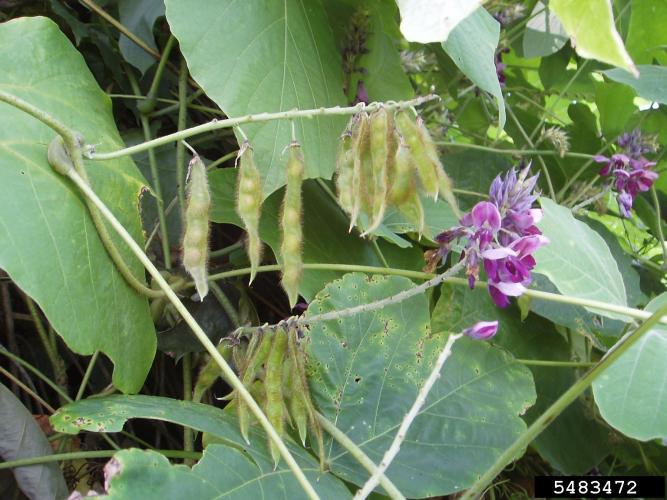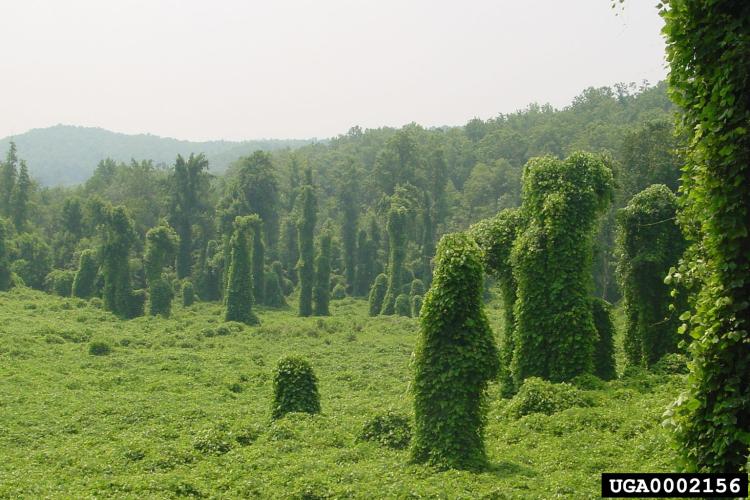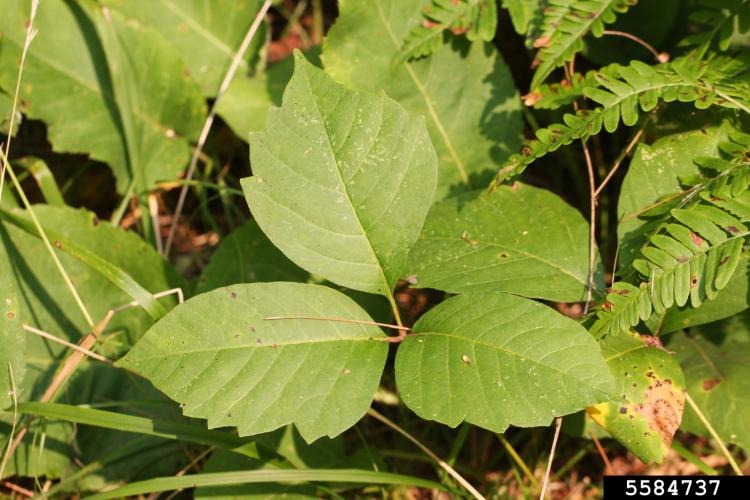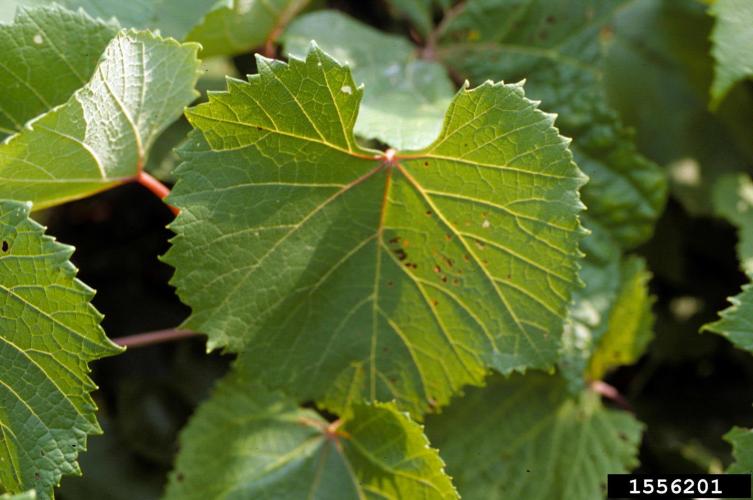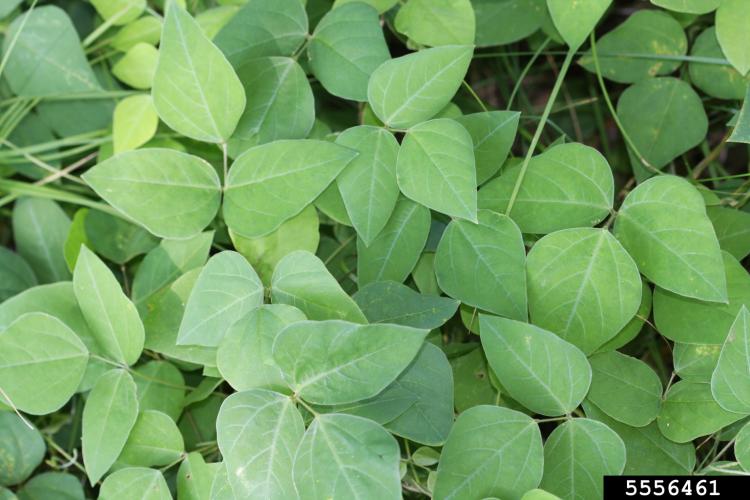Kudzu
Identification
Appearance
Kudzu is a climbing, deciduous vine capable of reaching lengths of over 60 feet in a single season.
Foliage
Leaves are alternate, compound (with three, usually lobed, leaflets), hairy underneath and up to 5 inches.
Flowers
Flowering occurs in midsummer, when 0.5 in. (1.3 cm) long, purple, fragrant flowers hang, in clusters, in the axils of the leaves.
Fruit
Fruit are brown, hairy, flat, 3 in. (7.6 cm) long, 0.3 in. (0.8 cm) wide seed pods.
Biology
Origin
Native to Japan/China, kudzu was introduced to U.S. in 1876 as ornamental and intentionally spread in the Dust Bowl Era for erosion control. Generally spreads through vegetative means (runners); can also spread through seeds, altough this is less common.
Habitat
Forest edges, roadsides, abandoned fields and disturbed areas in almost any soil type. Prefers full sun.
ECological Threat
Kudzu is a landscape threat because it smothers other plants with a dense blanket of leaves and girdles or uproots trees. It is known as “the vine that ate the South”. Kudzu is not established in Vermont, but poses a significant threat to the state’s ecosystems and agriculture. With increasingly milder winters, kudzu may be able thrive in many parts of Vermont. Kudzu can grow in a wide range of soil types and appears acclimated to neighboring northeastern states. Because it is a legume and fixes its own nitrogen, it can rapidly outcompete native plants in poorer soils, creating a virtual monoculture.
Vermont Distribution
According to EDDmaps, kudzu is confirmed in 33 states and Ontario, Canada (see map). The majority of the infestation is in the Southeastern states. It is not known to be in Vermont.
How You Can Help
Kudzu is on the early detection list of plant species. Early detection of new infestations increases our ability to slow their spread and potentially eradicate them from affected areas.
Citations
Photo Credit
Kudzu images (5483269, 5483466, 2307160, 5483472, 5483266, 5483458) Leslie J. Mehrhof, Bugwood.org
Kudzu infestation, 0002156, Kerry Britton, Bugwood.org
Poison ivy, 5584737, Steven Katovich, Bugwood.org
American hogpeanut, 5556461, Steven Katovich, Bugwood.org
Grape foliage,1556201, Ohio State Weed Lab, Bugwood.org
Information Credit
